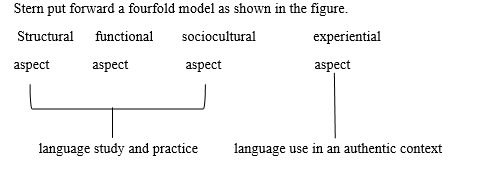知识点三:Linguistic underpinning of syllabus design
1. Definition of syllabus
A syllabus is an official document that authoritatively determines the content and principles of teaching and learning. It is designed with the reference to: 1) the social aim for the teaching the language; 2) information about the group of learners; 3) the account of time allocated in the curriculum; 4) theories of language and language acquisition. There are two fundamental questions in constructing a syllabus: what elements should be included? On what principle should they be sequences?
2. Structural syllabus
Structural syllabus assumed that the elements should be defined by reference to certain formal in terms of linguistic description and that the sentence should be the basic teaching unit. It was supposed that if learners could accumulate knowledge of the underlying system of the language, they would be able to use the language in communication when occasions arise. The core component of a syllabus based on such theoretical assumptions is naturally sentence patterns, which are sequences according to structural complexity.
Its advantage is that it is economical. Learning a limited set of rules can lead to production of a very large number of sentences. Its serious defect lies in the fact that sentences are units of linguistic analysis but not of natural language use. Although learners may be able to construct grammatical sentences, they are often at a loss in real situations, wondering what it is appropriate to say.
3. Communicative syllabus
Communicative syllabus was “what does the learner need/want to do with the target language?” syllabi began to appear in which content was specified, not only in terms of the grammatical elements, but also in terms of the functional items students would need to master analysis of learners’ needs.
Communicative syllabus was “what does the learner need/want to do with the target language?” syllabi began to appear in which content was specified, not only in terms of the grammatical elements, but also in terms of the functional items students would need to master analysis of learners’ needs.

Next, let’s do some exercises together.
